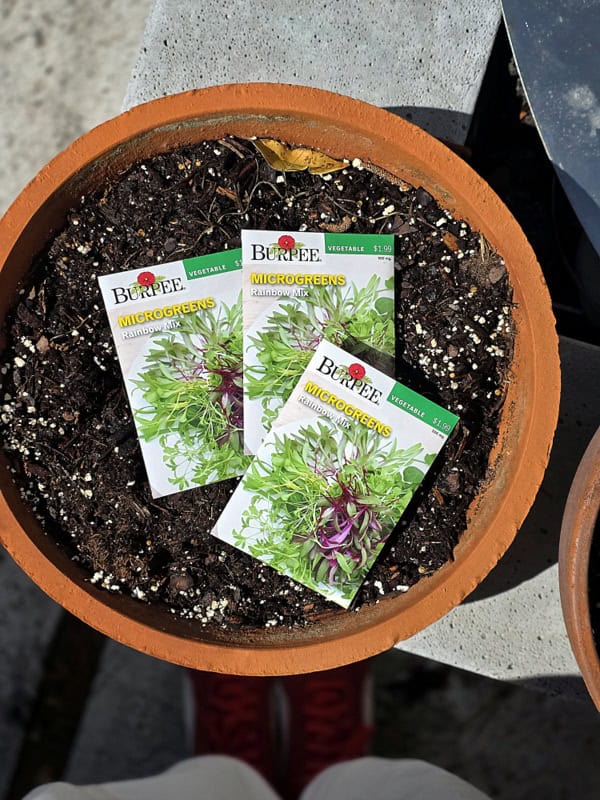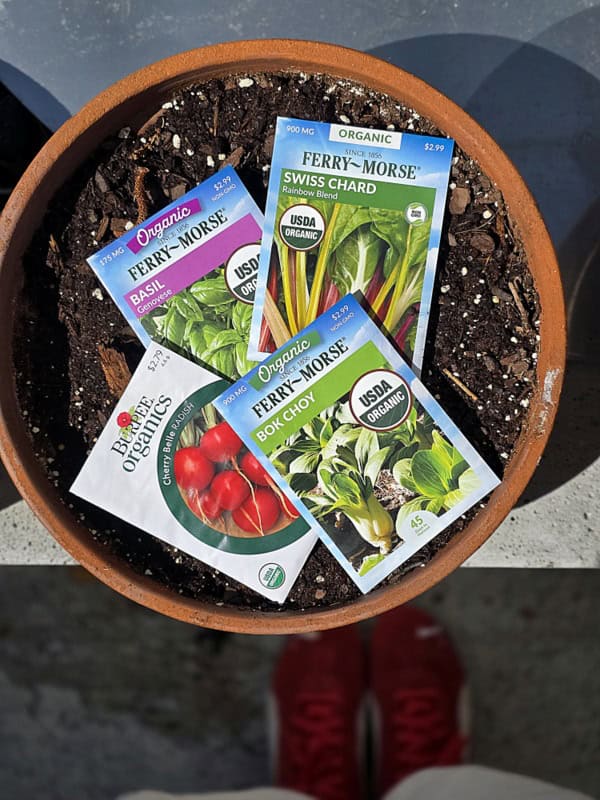How to Grow Microgreens at Home

This post may contain affiliate links. For more information, please see our disclosure policy.
Step into the world of learning how to grow microgreens and elevate your culinary creations with vibrant flavors and nutrients.
What are Microgreens
Microgreens are young, edible seedlings of vegetables and herbs, harvested just after the first true leaves appear—usually 7–14 days after germination.
Though small, these greens are packed with flavor and nutrients, making them popular in salads, smoothies, and gourmet dishes. They differ from sprouts in that they are grown in soil or a growing medium and are harvested above the root line.
Click here to see some of my things you’ll need for your microgreen adventure!
Seeds for Microgreens
The best seeds for growing microgreens are:
-
Untreated and organic: Free of chemical coatings and safe for food use.
-
High germination rate: To ensure dense growth and consistent yield.
Popular Microgreen Seeds Include, but not limited to:
-
Broccoli
-
Radish
-
Pea shoots
-
Sunflower
-
Basil
-
Arugula
-
Mustard
-
Cilantro
Microgreen seeds come in packages. But you can also build your own combination of seeds using a variety of your favorite seeds.
It’s simple and easy to mix. Just open the packages and combine in a small bowl. Blend together. Presto, you have your own curated microgreen mix!
Growing Microgreens
I prefer growing my microgreens outdoors when weather permits. They can be grown indoors, but I’ve never been that successful with them.
To grow outdoors, here are some suggestions:
Choose the Right Spot
-
Sunlight: Pick a location that gets 4–6 hours of sunlight per day.
-
Shade during heat: In hot climates, a spot with partial shade in the afternoon helps prevent drying out.
-
Protection: Choose a place sheltered from heavy rain and wind.
Select Containers or Garden Beds
You can grow microgreens in:
-
Shallow trays
-
Wooden boxes
-
Raised garden beds
-
Even large pots
- Disposable pie plates
- Plastic trays from garden centers (where lots of small potted plants can be placed)
- Check my Amazon Storefront for containers!
Drainage is key—make sure water doesn’t pool in the soil.
Prepare the Growing Medium
Use:
-
Organic potting soil
-
Compost + coconut coir mix (optional)
-
Seed-starting mix or make your own! Check my Amazon Storefront.
Fill your container or bed with 1–2 inches of growing medium and lightly level the surface.
Sow the Seeds
-
Choose seeds labeled for microgreens (organic, untreated).
-
Spread densely, but not overlapping.
-
Lightly press them into the soil.
-
You don’t need to cover most microgreen seeds with soil—just press them in gently.
Water Gently
-
Use a fine mist spray to keep the top layer moist.
-
Keep watering 1–2 times daily, depending on the weather.
-
Avoid overwatering, especially during humid or rainy days.
Monitor Growth
-
Seeds germinate in 2–4 days.
-
Once sprouted, they grow quickly and are usually ready to harvest in 7–14 days.
-
Keep the soil moist and check for pests (slugs or birds).
Harvest Time!
-
Use clean scissors or a knife.
-
Cut just above the soil level.
-
Rinse lightly and enjoy!
Nutritional Benefits of Microgreens
Microgreens are a nutritional powerhouse. Studies have shown they can contain up to 40 times more nutrients than their mature counterparts. Benefits include:
-
High levels of vitamins C, E, and K
-
Rich in antioxidants
-
Source of phytonutrients and polyphenols
-
Supports heart health and immune function
The exact nutrient content varies by type. For example, red cabbage microgreens are high in vitamin C and sulforaphane, a cancer-fighting compound.
Where Can I Buy Microgreen Seeds
You can find microgreen seeds at:
-
Online retailers like True Leaf Market, Johnny’s Selected Seeds, or Amazon
-
Garden centers or nurseries
-
Health food stores with a gardening section
-
Local farms or seed swaps













